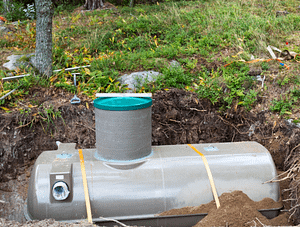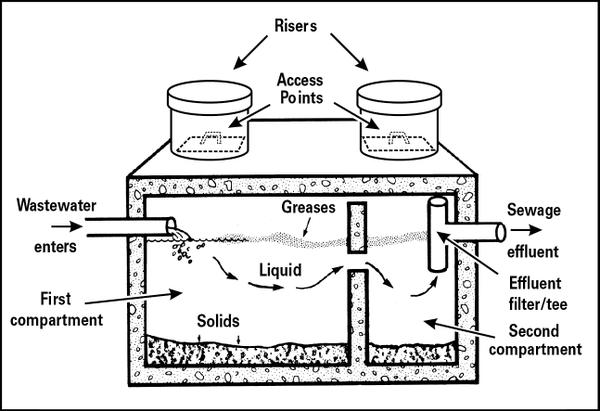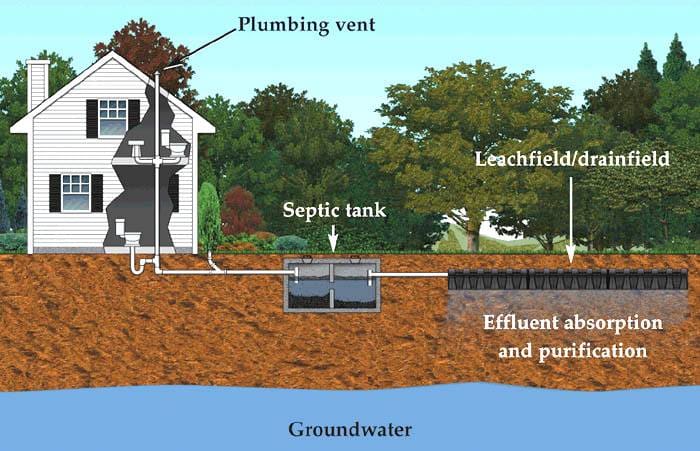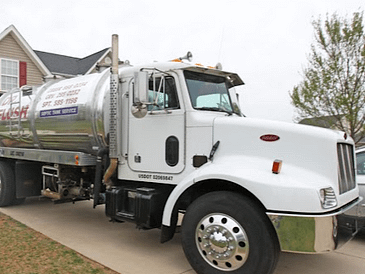If you own a property that is not connected to a municipal sewer system, planning a septic system installation is a crucial step to ensure proper wastewater management. While it may seem daunting, with the right information and guidance, you can navigate through the process smoothly.
Determining the need for a septic system installation
Before proceeding with a septic system installation, it’s important to determine if your property requires one. If you are experiencing frequent sewage backups, foul smells, or slow drains, these could be signs of a failing septic system. Additionally, if your property is not connected to a municipal sewer system, a septic system is necessary for proper waste disposal.
Evaluating the property and soil conditions
Once you’ve established the need for a septic system, the next step is to evaluate the property and soil conditions. This assessment helps determine the size and type of septic system suitable for your property. Factors such as soil composition, groundwater level, topography, and available space will be considered.
Working with a professional septic system installer is essential during this stage to ensure accurate evaluations and compliance with local regulations. They will conduct soil tests to assess the percolation rate, determine the suitable location for the drainfield, and calculate the required tank size based on your household’s water usage.
Planning a septic system installation requires careful consideration of various factors to ensure proper functioning and compliance with regulations. By determining the need for a septic system and evaluating property and soil conditions with professional assistance, you can take the necessary steps towards a successful installation and long-term wastewater management.

Permits and Regulations
When it comes to planning a septic system installation, there are important factors to consider in order to comply with local regulations and ensure a smooth process. Here are the key points to keep in mind:
Understanding local regulations and requirements
Before starting any septic system installation, it is crucial to understand the local regulations and requirements governing such projects. These regulations vary widely depending on the area, and it is important to comply with them to avoid potential fines or legal issues. Familiarize yourself with the specific rules regarding setbacks, tank sizes, drain field specifications, and any other requirements set forth by your local authority.
Obtaining necessary permits and approvals
Once you have a clear understanding of the regulations, the next step is to obtain the necessary permits and approvals. This typically involves submitting applications and paying the required fees. It is important to have all the required documentation in order, such as site plans, soil tests, and system designs, which are often required for permit applications. Working with a professional septic system installer who has experience navigating the permitting process can be invaluable in ensuring everything is done correctly and efficiently.
By taking the time to understand local regulations and obtaining the necessary permits, you can ensure that your septic system installation is done in compliance with the law and meets all the necessary requirements. This will not only give you peace of mind but also help guarantee the long-term functionality and efficiency of your septic system.

Septic System Design
When it comes to planning a septic system installation, there are several important factors to consider. From determining the appropriate system size and type to considering household size and usage, careful planning is essential to ensure the system functions effectively and meets the needs of the property.
Determining the appropriate system size and type
The size and type of septic system you choose will depend on several factors, including the number of bedrooms in the house, the daily water usage, soil conditions, and local regulations. Consulting with a professional septic system designer or engineer can help determine the appropriate size and type of septic system for your specific needs.
Considering factors such as household size and usage
Household size and usage play a significant role in septic system design. The number of people living in the house, the frequency of water usage, and the types of fixtures and appliances used all impact the amount of wastewater generated. Understanding these factors allows for proper sizing and design of the septic system, ensuring it can handle the wastewater load.
In addition to household size and usage, it’s important to consider any future expansion plans or changes in water usage habits. A septic system should be designed to accommodate potential changes to avoid costly modifications down the line.
Proper planning and design are crucial when it comes to installing a septic system. By determining the appropriate system size and type, considering factors such as household size and usage, and consulting with professionals, you can ensure that your septic system functions efficiently and meets your needs for years to come.
Choosing a Septic System Contractor
Planning and installing a septic system can be a complex process, but with the right contractor, it can be stress-free. Here are some key points to consider when choosing a septic system contractor.
Researching and selecting a reputable contractor
It is crucial to thoroughly research and select a reputable septic system contractor to ensure the installation is done correctly. Consider the following steps:
- Check for licenses and certifications: Verify that the contractor has the necessary licenses and certifications required by your local authorities. This ensures they have the knowledge and expertise to perform the installation.
- Read reviews and testimonials: Look for feedback from previous customers to get an idea of the contractor’s reputation and the quality of their work. Check online review platforms or ask for references from the contractor directly.
- Ask about experience: Inquire about the contractor’s experience in installing septic systems. An experienced contractor will be familiar with local regulations and potential challenges that may arise during the installation process.
Obtaining multiple quotes and comparing options
To ensure you are getting the best value for your money, it’s important to obtain multiple quotes and compare the options. Consider the following:
- Request detailed quotes: Ask each contractor for a detailed quote that includes all the necessary components of the installation, such as excavation, permits, materials, and labor. This will allow you to compare the costs accurately.
- Evaluate the scope of work: Carefully review the scope of work outlined in each quote. Ensure that each contractor is offering the same level of service and the work aligns with your needs and expectations.
- Consider the timeline: Discuss the timeline for the installation with each contractor. It’s essential to choose a contractor who can complete the installation within a reasonable timeframe that works for you.
By conducting thorough research and obtaining multiple quotes, you can ensure a successful septic system installation that meets your needs and budget.
Site Preparation
Clearing and leveling the area for installation
To ensure a successful septic system installation, proper site preparation is crucial. Clearing and leveling the area where the system will be installed is the first step in this process.
Before the installation crew arrives, remove any vegetation, trees, or debris from the area. This will prevent any interference during the installation process. It is essential to create a level surface for the system to function optimally. If the area is uneven, grading and leveling might be necessary to create a flat base.
Ensuring proper setbacks and accessibility
Another key consideration in planning a septic system installation is ensuring proper setbacks and accessibility. Setbacks are regulations that determine how far the septic system should be from various structures and water sources.
Check with your local health department or regulatory agency to understand the setbacks required in your area. Ensure that your system adheres to these guidelines to avoid any potential health or environmental risks.
Accessibility is another important factor to consider. The system should be easily accessible for maintenance and repairs. It’s recommended to keep the septic tank and drain field away from driveways, parking areas, or any area where heavy machinery or vehicles may drive over.
By properly clearing and leveling the installation area and adhering to setbacks and accessibility guidelines, you can ensure a smooth and effective septic system installation.
Please note that septic system installations should only be carried out by licensed professionals who are knowledgeable about local codes and regulations.

Septic Tank Installation
Septic tank installation is an essential process for any property that is not connected to a municipal sewage system. Whether you are building a new home or replacing an old septic system, proper planning and execution are vital to ensure the system functions effectively. Here are a few key points to consider when planning a septic tank installation.
Excavating and placing the septic tank
The first step in the septic tank installation process is excavating the ground to create a suitable location for the tank. It is important to follow local regulations and guidelines regarding the distance from the tank to well water sources, property lines, and other structures. Once the excavation is complete, the septic tank is carefully placed in the prepared hole. The tank should be level and supported properly to prevent any shifts or damage in the future.
Installing necessary inlet and outlet pipes
After the septic tank is in place, the next step is to install the necessary inlet and outlet pipes. The inlet pipe carries wastewater from your home into the tank, while the outlet pipe carries treated effluent to the drain field. These pipes must be properly connected to the tank and positioned at the correct angles to ensure smooth flow and prevent any blockages or backups.
Other considerations for septic tank installation include obtaining the necessary permits, sizing the tank correctly based on property size and water usage, and considering additional components such as distribution boxes or effluent filters. It is important to work with a professional septic tank installation company that has the expertise and experience to guide you through the process and ensure compliance with local regulations.
Remember, proper planning and installation are key to a well-functioning septic system that will serve your property for many years to come.
References:

System Testing and Inspection
Planning a septic system installation requires careful consideration and adherence to local regulations. One key step in the process is conducting system testing and inspection to ensure proper functionality and compliance with safety standards.
Conducting pressure and flow tests
Before the installation begins, it’s essential to conduct pressure and flow tests on the septic system. These tests determine if the system can handle the expected wastewater volume and ensure proper functioning. They also help identify potential issues such as leaks or blockages that may need to be addressed before installation.
During the pressure test, the septic system is pressurized to measure its response under normal operating conditions. This helps verify the system’s integrity and identify any weak spots.
Flow tests assess the system’s ability to handle the anticipated wastewater flow rate. By running water through the system at different rates, technicians can determine if the system can effectively handle the expected load.
Arranging for necessary inspections and certifications
Once the pressure and flow tests are complete and any necessary repairs or adjustments have been made, the next step is scheduling inspections and obtaining the required certifications.
Local regulations often require inspections by licensed professionals to ensure the system meets safety and environmental standards. Inspectors will assess various components of the septic system, such as the tank, drainfield, and distribution lines, to ensure proper installation and functioning.
Obtaining certifications is also crucial. These certifications demonstrate that the septic system installation complies with all applicable regulations and standards. They may be required for obtaining permits, selling a property, or ensuring the system’s longevity and functionality.
In conclusion, proper testing and inspection are vital when planning a septic system installation. By conducting pressure and flow tests and arranging for necessary inspections and certifications, you can ensure a reliable and compliant septic system for your property.

[h2]Septic System Maintenance[/h2]
[b]Taking care of your septic system[/b] is crucial to ensure its longevity and functionality. Regular maintenance can prevent costly repairs and health hazards. Here are some key points to consider when planning a septic system installation.
[h3]Understanding ongoing maintenance requirements[/h3]
Proper maintenance starts with understanding the ongoing requirements of your septic system. Septic tanks generally require pumping every 3 to 5 years, depending on the size of your household and tank capacity. It’s essential to monitor the system regularly, checking for signs of leakage, odors, or backups. Regular inspections can help identify issues before they become major problems.
[h3]Implementing regular pumping and inspection schedules[/h3]
Creating a pumping and inspection schedule is vital for the health of your septic system. Consult with a professional to determine the appropriate frequency for pumping based on your specific circumstances. During a pump-out, a licensed technician will remove the accumulated solids from the tank, preventing clogs and blockages. Additionally, regular inspections will allow professionals to assess the condition of your system and provide any necessary repairs or maintenance.
Remember, proper septic system maintenance also includes conserving water, avoiding flushing harmful substances down the drain, and using septic-safe products. Educating your household members about these practices can go a long way in preserving the functionality and lifespan of your septic system.
By following these key points, you can ensure that your septic system operates efficiently and avoids any future problems. Regular maintenance and inspections will save you time, money, and potential headaches down the road.
In summary, a well-maintained septic system is essential for the smooth functioning of your property and protecting the environment. Don’t neglect the ongoing maintenance requirements and create a regular pumping and inspection schedule to keep your septic system in optimal condition.

Conclusion
Planning a septic system installation may seem daunting, but with the right knowledge and preparation, it can be a smooth and successful process. By considering the size of your property, soil conditions, and local regulations, you can ensure that your septic system meets your needs and functions properly for years to come.
Final thoughts on planning a septic system installation
When it comes to septic system installation, it’s crucial to work with experienced professionals who understand the local regulations and can guide you through the process. Take the time to research and choose a reputable contractor who specializes in septic systems. They will help you navigate the necessary permits, inspections, and any specific requirements for your area.
Additionally, make sure to consider the needs of your household when determining the size of your septic system. A larger system may be necessary if you have a large family or frequently entertain guests. On the other hand, a smaller system may be sufficient for a smaller household.
Tips for a successful and efficient installation process
To ensure a successful installation process, here are a few tips to keep in mind:
- Plan ahead: Give yourself plenty of time to research and gather the necessary information. This includes contacting local authorities, obtaining permits, and scheduling inspections.
- Consider future needs: While planning your installation, think about any future expansions or changes that may require adjustments to your septic system. It’s better to plan for these possibilities in advance.
- Stay informed: Keep yourself updated on any changes in local regulations or best practices for septic system installations. This will help you make informed decisions and ensure compliance with any updated requirements.
By following these tips and working with knowledgeable professionals, you can ensure a successful septic system installation that meets your needs and protects the environment.


